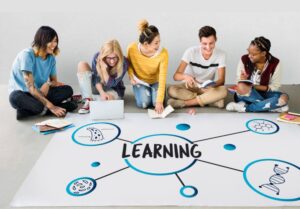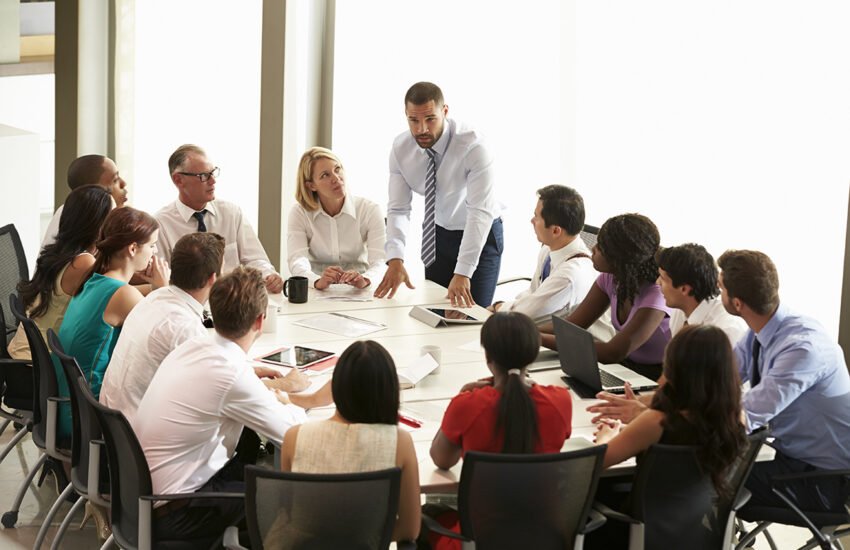What Is Education and Peers? “Education and Peers” explores the complex dance that forms people along their academic journey by highlighting the synergistic relationship between social dynamics and personal development. The impact of peers is woven into the fabric of education, which transcends the confines of the classroom. Peer interactions have a crucial role in students’ academic advancement as they navigate the environment, influencing social, emotional, and cognitive domains. Peer pressure and education work together dynamically to shape viewpoints, values, and character.
This interaction builds the groundwork for vital life skills in addition to helping students succeed academically. Realizing how education and peers are intertwined reveals a rich tapestry of shared experiences, cooperative learning, and the development of enduring relationships.
In this investigation, we explore the significant influence that peer connections have on the educational environment and the ways in which education influences relationship dynamics, ultimately leading to a comprehensive developmental path for each student.
What Is Education and Peers

What effects do peer interactions have on learning outcomes and academic achievement in the classroom?
Within the field of Education and Peers, peer connections have a substantial influence on learning outcomes and academic success. Students’ dynamic relationships with one another create an environment that can help or hurt their ability to succeed academically. Studies show that having supportive peer interactions enhances motivation, fosters teamwork, and creates a feeling of community—all of which are linked to better academic achievement.
On the other hand, unfavorable peer relationships can cause distractions, disinterest, and even a reduction in academic performance. Recognizing its substantial implications for individual learning trajectories, the combined influence of Education and Peers emphasizes the significance of cultivating a supportive social environment.
What impact do peer relationships have on pupils’ social and emotional development?
In order to shape kids’ social and emotional development, Education and Peers are inextricably linked. The development of social skills, empathy, and a sense of self is greatly aided by peer relationships. Students develop their emotional intelligence by navigating the complexities of human interactions through cooperation, conflict resolution, and shared experiences.
Good peer relationships offer a network of support that helps manage difficulties, lessens feelings of loneliness, and improves general wellbeing. Individuals are shaped not only academically but also emotionally by this interaction between Education and Peers, producing well-rounded people who can successfully negotiate the challenges of society.
Read Also: Education and Emerging Challenges
Exist any special tactics or initiatives in school that promote healthy peer relationships?
In fact, a number of tactics and initiatives within the field of Education and Peers are intended to foster constructive social dynamics. Educators utilize many methods such as team-building events, collaborative learning initiatives, and peer mentorship programs to cultivate a sense of community and mutual support.
These deliberate interventions seek to dismantle social obstacles, advance inclusivity, and foster the growth of constructive peer connections. Furthermore, social-emotional learning (SEL) curriculum are frequently used in schools, giving kids the tools they need to resolve conflicts, navigate relationships, and develop empathy. Education and Peers work together to create an atmosphere that supports positive social development by incorporating these tactics.
What role does the relationship between teachers and students have in the learning environment as a whole?
In the context of Education and Peers, the relationship between instructors and peers plays a critical role in determining the overall learning environment. In addition to imparting academic knowledge, educators also support students’ social and emotional development. A supportive and inclusive environment is established by the positive relationship that exists between teachers and students.
Students are more likely to imitate courteous and cooperative behavior in their peer relationships when educators set an example of these traits. This mutually beneficial relationship improves the educational process by promoting a feeling of belonging, trust, and shared accountability in the classroom.
What effect does peer pressure have on students’ decision-making and educational choices?
Peer pressure is a common aspect of Education and Peers, and it has the power to profoundly impact students’ educational decisions and choices. A person’s drive for social approval and conformity might influence their choice of extracurricular activities, academic courses of study, or even learning attitudes.
Good peer pressure can inspire students to achieve academic success by promoting healthy competition and a dedication to self-improvement. On the other hand, unfavorable peer pressure could cause students to make decisions that are contrary to their academic objectives. It is imperative that educators and peers acknowledge and tackle the effects of peer pressure in order to foster an atmosphere that promotes autonomous thought and well-informed choices.
Read Also: Education and Contributing to a Better World
Can the nature of peer connections in a person’s early years affect them in ways that go beyond their academic career?
In fact, the quality of peer relationships throughout formative years in Education and Peers can have long-term implications that go well beyond the academic experience. According to research, an individual’s adult interpersonal skills, mental health, and general level of life happiness can all be influenced by the social connections they made throughout their adolescent.
Strong social support networks are built on positive peer interactions, which have an impact on relationships, job decisions, and general well-being. On the other hand, unfavorable events during these early years might be a factor in problems like social anxiety, low self-esteem, and trouble making lasting relationships in the future. As a result, the influence of Education and Peers continues long after school, shaping people’s lives in ways that go far beyond their academic goals.
Education and Peers: An Intricate Dance
The symbiotic relationship between education and peers is crucial in determining how students’ academic and personal development will unfold in the dynamic field of education. This dynamic interaction transcends the confines of the typical classroom, creating a tapestry of influences that have a big impact on the educational process. The relationship between education and peers has several facets that warrant further investigation, ranging from academic achievement to social and emotional development.
Academic Success Through Education and Peers
Collaborative classroom settings are one of the most obvious examples of how education and peers may work together. Studies show time and time again that kids who participate actively in class activities with their peers achieve more academically.
Group projects, peer tutoring, and cooperative problem solving are just a few ways that the combined brainpower of the group improves individual understanding and memory. The sharing of thoughts and viewpoints creates a vibrant learning atmosphere where education and peers support one another, resulting in a mutually beneficial connection that accelerates academic achievement.
Read Also: Education and the Business Community
Education and Peers: A Social Laboratory
Education includes the development of critical social skills that are refined in the company of peers and goes much beyond textbooks and lectures. The educational system serves as a social laboratory where empathy, communication, and teamwork are fostered and developed.
Students acquire important life lessons that go beyond the classroom as they negotiate the intricacies of interpersonal interactions in group activities and extracurricular activities. As people learn the nuances of cooperation and respect for one another, education and peers become increasingly important in preparing them for life’s problems.
Positive Peer Interactions’ Significance
Character development is accelerated in the context of education by positive peer interactions. education and peers go hand in hand to provide a supportive atmosphere where morals, values, and a sense of duty are instilled. There are many examples, such as when students help one another out on difficult tasks or create a welcoming environment that values diversity.
Kindness and empathy are fostered in schools where a great focus is placed on healthy peer interactions. Hence, education and peers combine to create a moral compass that directs people beyond their academic pursuits.
Developing Peer Dynamics and Education
In the symphony of education and peers, educators play the role of conductors, molding the classroom atmosphere and affecting the dynamics of student relationships. Beyond merely delivering knowledge, a teacher’s job is to help pupils develop a culture of cooperation, respect, and open communication.
Teachers who foster a supportive environment build on the good things that students and classmates have to offer, making the educational process both intellectually stimulating and socially nurturing.
Read Also: Graduate Level Theoretical Comprehension
Handling the Intersection of Education and Peers
Peer pressure adds a complex layer to the dynamics of student life and is a pervasive part in the fabric of education and peers. Peer pressure to adopt good study habits can have a positive influence, while subscribing to harmful ones might have a negative one.
One distinguishing feature of the schooling and peers tale is the fine line that must be drawn between fitting in and remaining true to one’s own goals. Building an atmosphere where students feel empowered to make decisions that are in line with their academic and personal goals requires acknowledging and addressing the influence of peer pressure.
Beyond Graduation, Education and Peers
Peers and education have a profound influence that goes much beyond the boundaries of the academic path, influencing people’s future paths in the process. Positive peer relationships throughout early years are regularly associated with permanent influence, as demonstrated by longitudinal research.
Examples include people who continue to participate in professional networks they made while in school, work together on projects, and encourage one another on their career pursuits. Education and peers create social ties that are essential to one’s personal and professional network, demonstrating the long-lasting impact of these connections.
Embracing Differences via Education and Peers
Effective education places a strong emphasis on inclusivity, acknowledging the diversity of its student body. education and peers work together to create understanding, celebrate diversity, and tear down barriers.
Students in inclusive classrooms learn from their different peers’ broad tapestry of experiences in addition to what they learn from textbooks. Because of its inclusivity, education is enhanced and students are better equipped to negotiate the globalized world in which cultural competency and teamwork are critical.

Programs for Peer Mentoring
Peer mentorship programs are prime examples of deliberate educational initiatives that capitalize on the constructive power of interactions between peers. These initiatives match seasoned students with freshmen or those in need of mentoring in order to maximize the positive effects of education and peer support.
Peers and education work together in a mentorship dance where knowledge is exchanged, obstacles are overcome, and a feeling of community is created. The secret to these programs’ success is their ability to use the natural bond between friends and education, which forms a support network that cuts beyond conventional hierarchical institutions.
In the Virtual World, Education and Peers
The dynamics of schooling and peers have extended into the virtual world in a technologically driven age. Online discussion boards, teamwork tools, and virtual classrooms transform how students communicate and share knowledge.
These digital platforms’ worldwide reach provide new opportunities for idea sharing and cross-cultural cooperation. Education and peers, no longer limited to physical classrooms, now dance across national boundaries to prepare kids for the globalized society they will soon inhabit.
The Perfect Harmony of Education and Peers
Education and peers combine in a complex dance to produce a melodic symphony that reverberates throughout people’s academic and personal lives. Peer pressure and education work together to create collaborative learning environments and long-lasting effects on personal and professional networks. This dynamic force helps people develop values, build character, and get ready for the challenges of a constantly changing world.
Acknowledging and nourishing this mutually beneficial association is crucial for cultivating an educational journey that surpasses textbooks and tests, setting the groundwork for a lifetime of development and significant relationships.
SEE ALSO:
Trust you found our article on Education and Peers helpful. Follow our website for more interesting articles.

